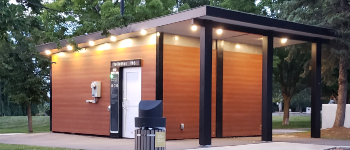Parks and recreational areas are essential to our communities, offering spaces for leisure, exercise, and social interaction. However, ensuring the safety of park visitors is paramount.
In this blog, we'll explore how implementing comprehensive park guidelines can promote safe recreational activities, drawing insights from authoritative sources and industry best practices.
The Importance of Park Safety
Before diving into specific guidelines, it's crucial to understand why park and playground safety matters. Both serve diverse populations, from young children to seniors, and each group has unique safety needs. By prioritizing safety, you can prevent accidents and injuries and enhance the overall park experience, encouraging frequent visits and fostering a sense of community well-being.
Playground Safety: A Critical Focus
Playgrounds are often the heart of many parks, attracting families and children. The U.S. Consumer Product Safety Commission's Handbook for Public Playground Safety offers invaluable guidance for safety rules at a playground.
Key aspects of playground safety include:
- Age-appropriate equipment: Ensure play areas are designated for different age groups, with commercial playground equipment designed to match each age range's physical and cognitive abilities.
- Proper surfacing: Install and maintain impact-absorbing surfaces beneath and around playground equipment to minimize injuries from falls.
- Regular inspections: Implement a routine inspection schedule to identify and address potential hazards, such as loose bolts, sharp edges, or worn components.
- Adequate supervision: Encourage parental or caregiver supervision, and consider posting signs that outline playground rules and safety tips.
Read More: Types of Safety Structures and Surfacing for Playgrounds
Trail and Natural Area Safety
Many parks feature trails and natural areas that require different safety considerations. The National Recreation and Park Association provides excellent resources for ensuring safety in these environments.
Essential guidelines for trail and natural area safety include:
- Clear signage: Install visible signs that indicate trail difficulty, length, and potential hazards. Include maps at trailheads and critical junctions.
- Trail maintenance: Regularly inspect and maintain trails to address erosion, fallen trees, and other potential dangers.
- Wildlife awareness: Educate visitors about local wildlife and provide guidelines for safe interactions, including proper food storage and disposal.
- Emergency preparedness: Establish emergency response protocols and ensure staff are trained in first aid and rescue techniques.
Water Safety in Parks
Parks with water features like lakes, rivers, splash pads, or swimming pools require specialized safety measures.
Essential water safety guidelines include:
- Lifeguard presence: Employ trained lifeguards during peak usage, especially in designated swimming areas. However, if you opt for a splash pad, you will not be required to have a lifeguard on duty (making this a budget-friendly option for water-based play!)
- Clear water-related safety rules: Post visible signs outlining water safety rules, including swim area boundaries and diving restrictions.
- Life-saving equipment: Ensure that life-saving equipment, such as life rings and reach poles, are readily available and in good condition.
- Water quality monitoring: Implement regular water quality testing and maintain proper chemical balance in swimming pools.
- Splash pad and spray park safety: For these popular attractions, ensure adequate drainage to prevent standing water, use slip-resistant surfaces, and regularly inspect and maintain water jets and features to prevent injuries. Post rules about appropriate behavior, such as no running or rough play, and consider implementing age restrictions or designated times for different age groups.
Read More: Playground 101: Learn the Types of Safety Surfacing
Promoting Safe Park Usage
Beyond physical safety measures, promoting safe behavior among park visitors is crucial. Consider these strategies:
- Educational programs: Offer workshops or events focused on outdoor safety, targeting different age groups and activities.
- Partnerships with local organizations: Collaborate with schools, community groups, and health organizations to spread awareness about park safety.
- Utilize technology: Develop mobile apps or use social media to share real-time safety updates, trail conditions, or weather alerts.
- Encourage community involvement: Create volunteer programs for park maintenance and safety monitoring, fostering a sense of ownership among regular visitors.
Read More: Keys to Success in Park Safety Implementation
Adapting to Changing Needs
As recreational trends evolve and new activities gain popularity, it's essential to adapt park guidelines accordingly. Stay informed about emerging recreational activities and their associated risks, and be prepared to implement new safety measures as needed.
Regularly review and update your park's safety guidelines, taking into account:
- Feedback from park and playground users, plus staff
- Incident reports and near-miss analyses
- New research and recommendations from safety organizations
- Changes in local, state, or federal regulations
Build a Safe Park Today
Promoting safe recreational activities through comprehensive park guidelines is an ongoing process that requires dedication, expertise, and adaptability. By drawing from authoritative sources like the U.S. Consumer Product Safety Commission and the National Recreation and Park Association and staying attuned to your community's specific needs, you can create a park environment that is both enjoyable and secure!
Do you want to discuss any equipment or amenities with safety in mind? Contact our team.






